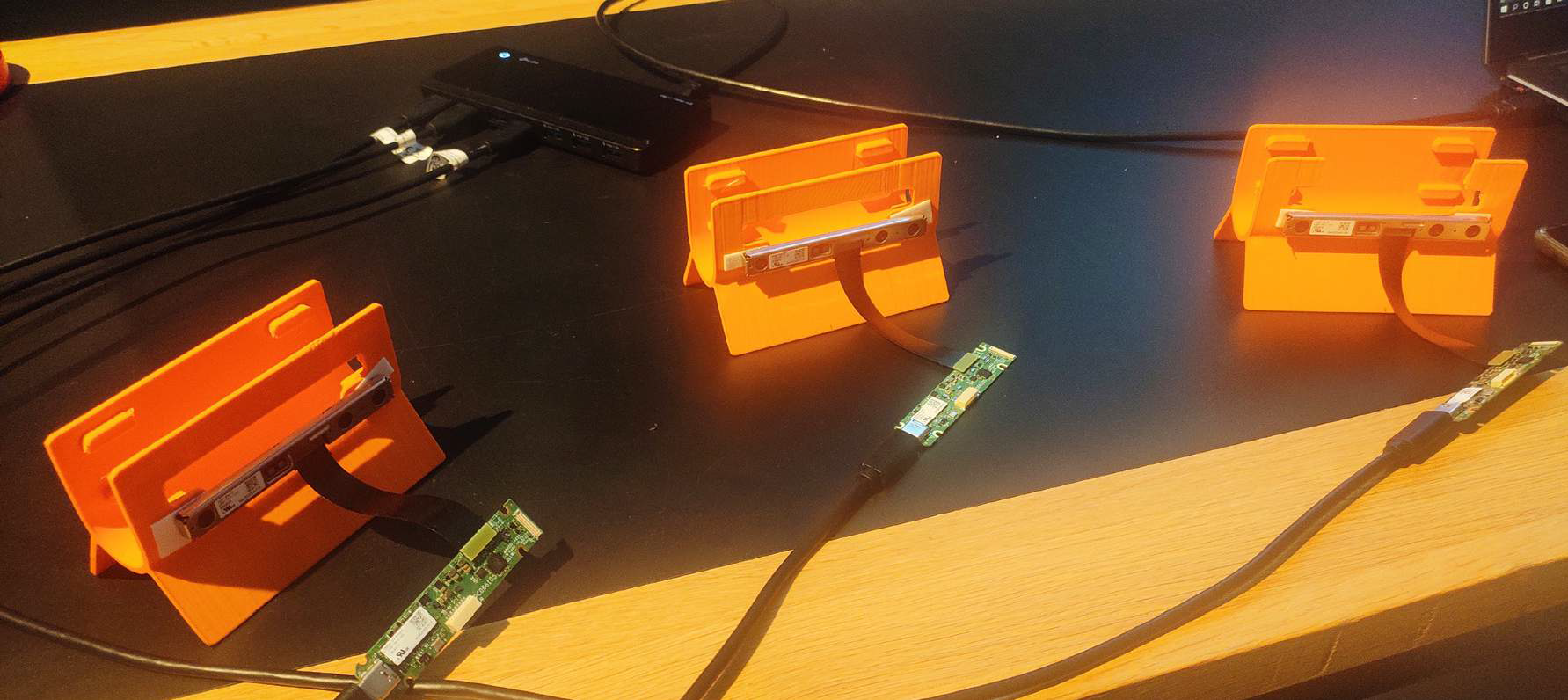3D Head scanner
Client: Maat!
Working Prototype
About Maat!
Maat! is a Dutch company that designs eyewear for differently-abled customers. They focus primarily on ultra-personalization and customizability based on their clients’ unique needs and lifestyles and they use 3D-scanning as their main technology to achieve this. I was given the opportunity to understand their workflow, their interactions with clients and gather insights on how there can be a meaningful design intervention.
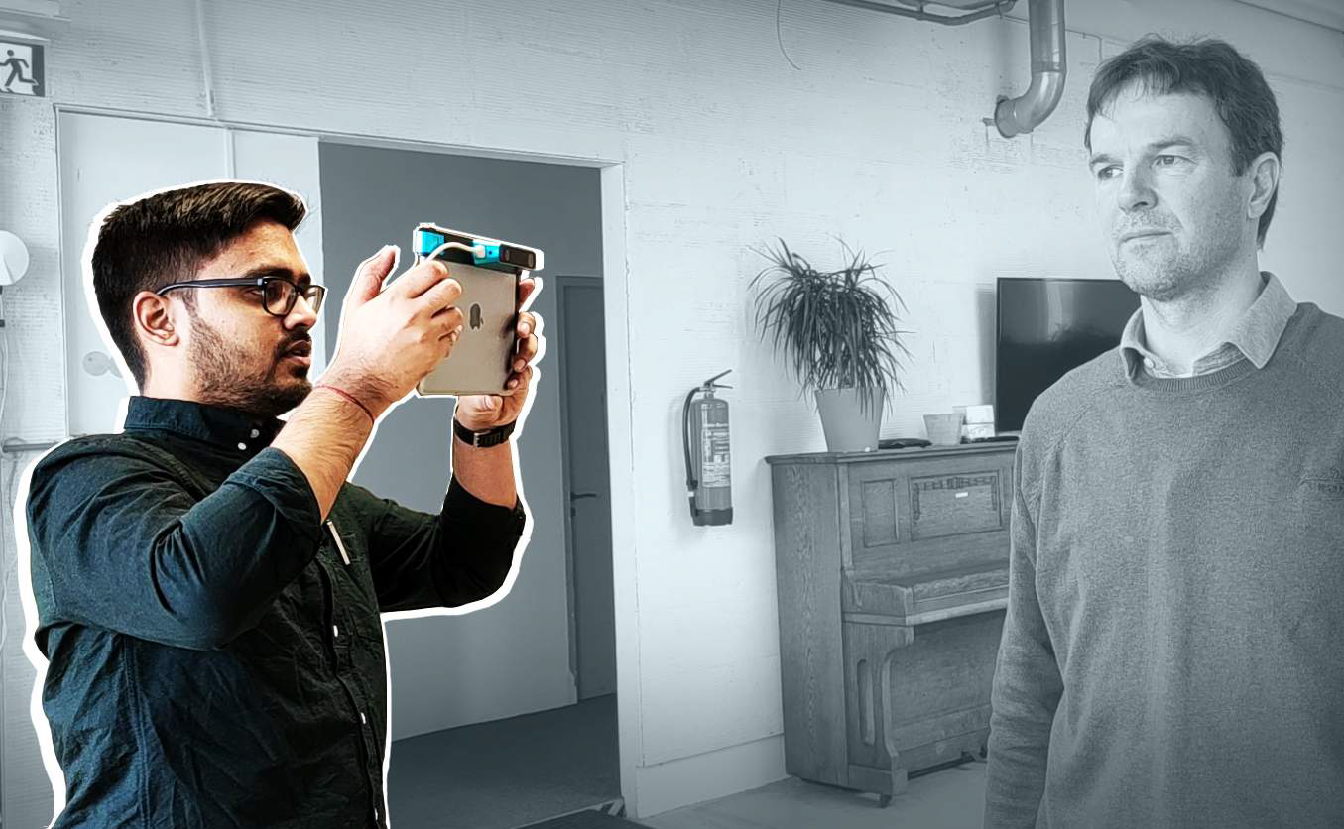
Maat!'s existing scanning process involves an iPad and a Structure Sensor to scan heads.
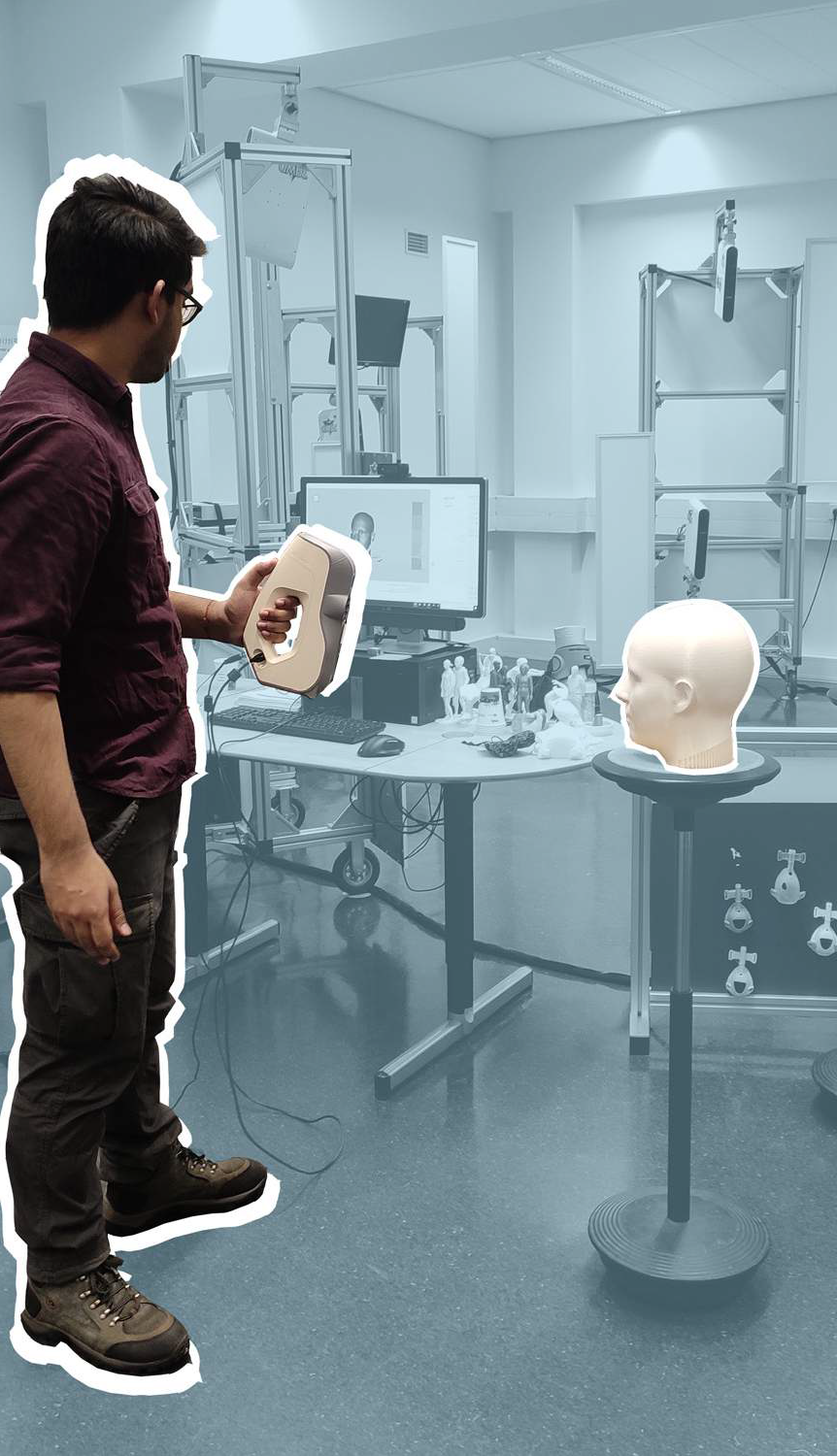
The Artec Eva is a specialized 3D scanner used for capturing benchmark scans in this project.
Comfort, speed & cost
While accuracy is an important technical requirement for a project such as this, my goal was to delve deeper and find out how such a redesign could be a comfortable experience for the people, reduce stress for the person capturing the 3D scans and help my client deploy this solution in multiple locations. The three overarching requirements were, therefore: Comfort for the user, Speed for the capturer and Cost.
These led me to Stereophotogrammetry as a scanning technique.

The Intel Realsense cameras, using Stereophotogrammetry, performed the best in terms of speed and are also relatively cheap.
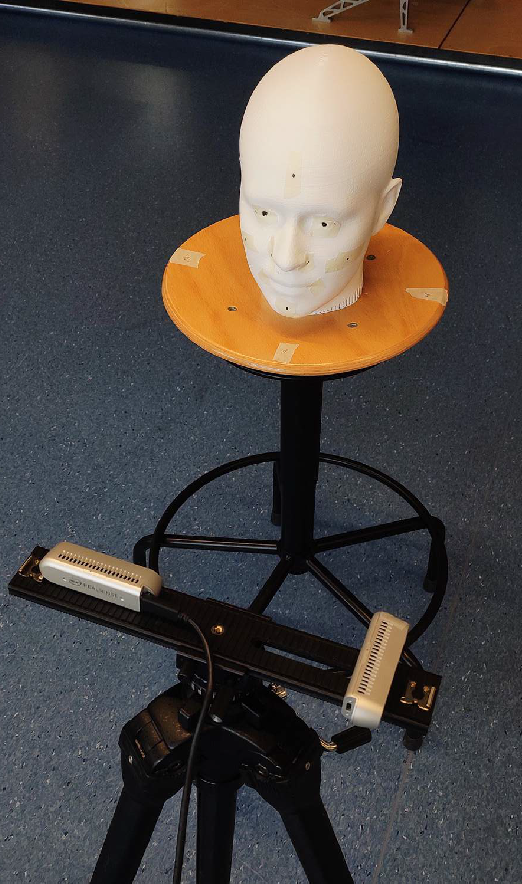
Accuracy was always a driving force from the technical standpoint and validating that calls for rigorous testing.
Concepting
A big part of this project was the integrated approach to technology and experience. Since most of the users who are scanned are children, the scanning experience needs to be relaxing, A big part of this overall experience is the look & feel of the device. The ideation process aims to capture the intention.



A secondary parallel ideation was on the device's attachment interface to a standard tripod. Here the mechanical design is shown along with the workings of the cameras.

The structural concept consists of 3 Intel cameras to capture the head scan from ear to ear. The form needed to capture the arcing gesture of the device due to the placement of the 3 cameras.
The 3D Head scanner
The 3D Head scanner is a tripod-mounted device that leverages the power of strereophotogrammetry to rapidly capture scans of the users head from ear-to-ear using 3 different cameras, one in the middle meant to capture the straight front view of the head and the eyes and 2 to the sides meant to capture the absolute views of the ears.


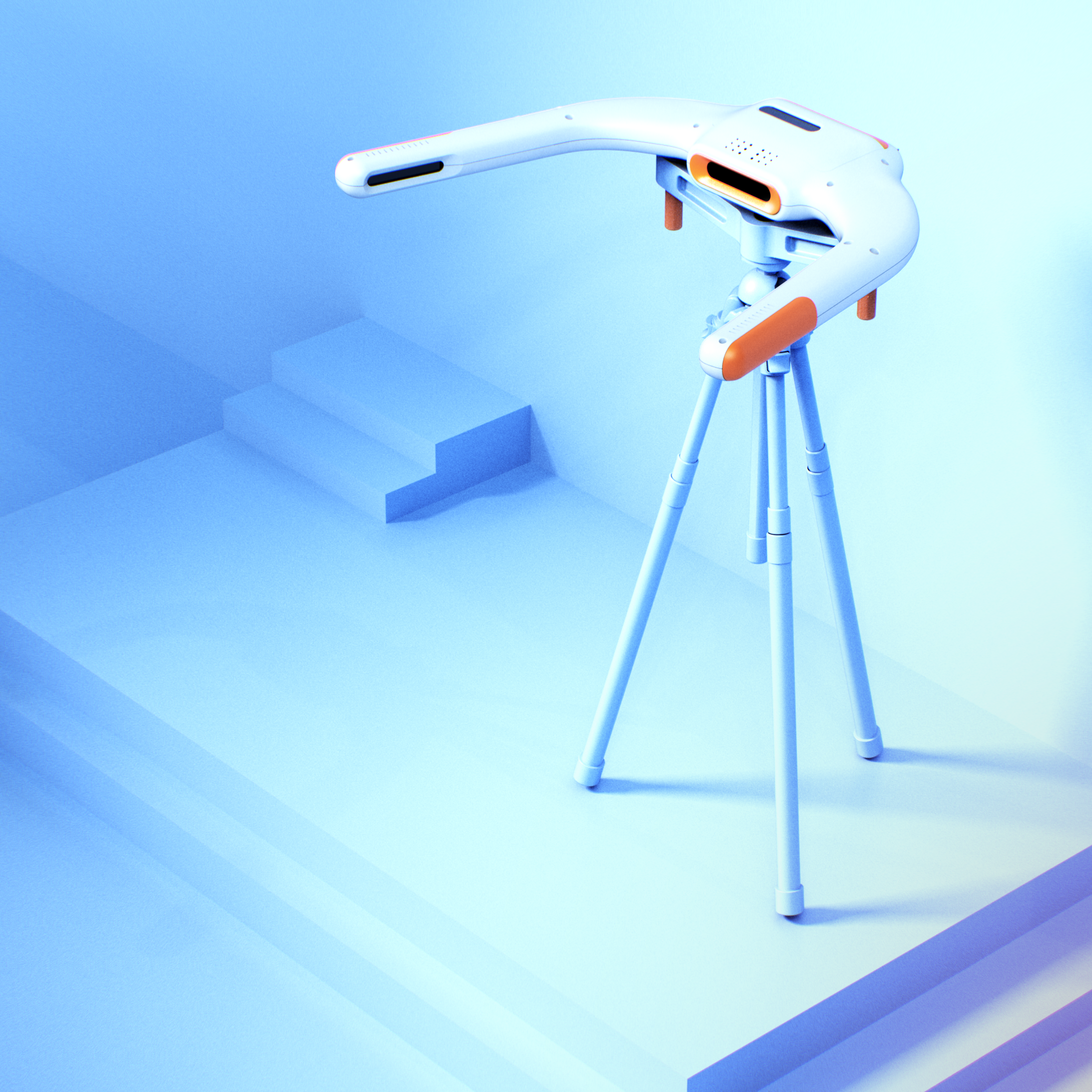


Rapid Capture
Since the head scanner uses stereophotogrammetry, the individual cameras capture scans in 500ms and a programme written in Python stitches the 3 scans together to reconstruct the full head that can then be used for CAD modeling.


The tripod interface
A key component of this project was attaching the device itself to a normal tripod saving development costs of an extra product, making the product height adjustable for different users and easy to orient. The tripod interface was designed keeping in mind ease of setup made possible by the 2 pins which lock the device to the interface using a thread-free, turn and lock mechanism, simple easy and reliable.



Prototyping & Testing
Concepting was only half the project, the real challenge was making it real and working in the way that it was envisioned. Testing the product with the many users was the most important part of the project. 3D printing made it possible to make a fully working prototype complete with stitching and representation.
